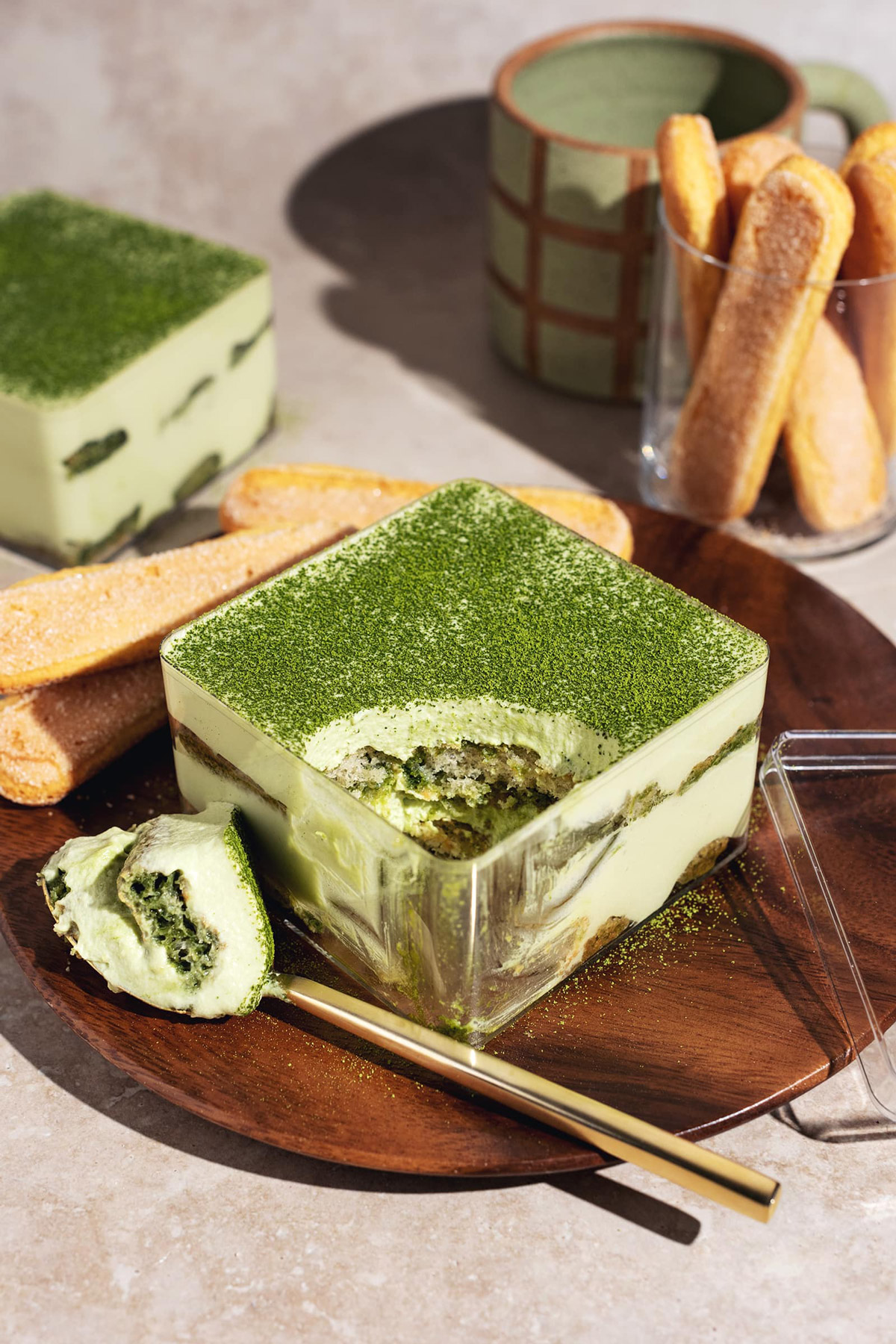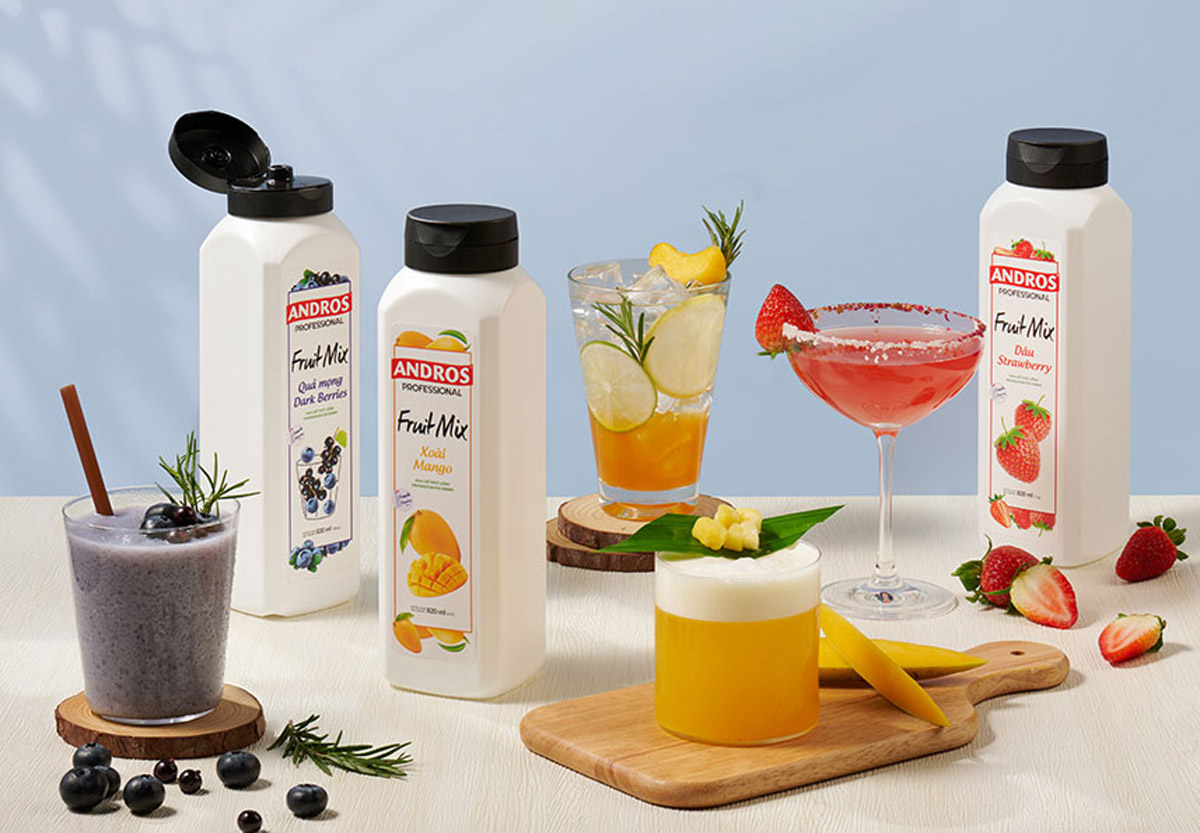Picture a day without sweet treats – no more yummy cheesecakes, no flavorful bubble tea, and no chilly, creamy gelato. How would that make you feel?
The staggering figure of $1.12 trillion in confectionery market revenue in 2023 (not to mention the annual growth rate of 5.82% for this market) proves one thing: we have never stopped adoring sweet flavors. Not only do sweets have mental health benefits, such as reducing stress and boosting joy and excitement, but if consumed in moderation and chosen wisely for healthier options, you’ll also notice an improvement in physical health.
Each passing year, as technology advances and as consumer tastes frequently evolve, new dessert trends consistently emerge. From variations of classic flavors to pure vegan desserts, what are the trends dominating the sweet market this year?
The Rise of ‘Egg-Free, Butter-Free, Dairy-Free’ Sweets
Have you ever savored a blueberry cheesecake or brownie so incredibly delicious that you couldn’t even tell it was entirely plant-based?
Beyond religious choices or health-driven decisions, veganism is becoming an integral facet of contemporary lifestyles. A 2021 Bloomberg Intelligence report suggests that by 2030, plant-based products might account for 7.7% of the global protein landscape, valued at an impressive $162 billion.

To put this into perspective, the global vegan dessert sector held a $2.77 billion valuation in 2019, with projections indicating a compound annual growth rate of 10.1% from 2020 through 2027. Leading this surge are cakes and pastries, representing over 25% of the worldwide market share in 2019.
A new trend is on the rise in the dessert world. Instead of using eggs, butter, and dairy, more and more chefs are creating sweet treats with plant milks, fruits, and coconut-based ingredients. These desserts are appearing on the menus of trendy restaurants and cafes. They’re not only for vegans but also for people with special dietary requirements, such as egg allergies or lactose intolerance.
Unleashing a Burst of Surprising Tastes
Isn’t it amazing how desserts have changed to delight our taste buds? They’re no longer just sweet and rich; now, they also have tangy, spicy, and even floral flavors.
While spicy hints from black pepper or Sichuan peppercorns might seem unconventional for desserts, their intertwining with sweetness, particularly in chocolate-infused treats, offers an exquisite taste revelation.
Signature global flavors — like star anise, chipotle, turmeric, and cayenne — are returning with a flair, merging creatively with the tangy and umami notes found in yuzu, ginger, and passionfruit.

Today’s market is flush with products featuring novel flavor pairings, paving the way for groundbreaking dessert concoctions: think pairings like pear and daisy, lychee and rose, or even intriguing combinations of fruits with spices and seeds, such as pear, apple with cinnamon, or tamarind with palm seeds.
Specializing in processing tropical fruits from local sources, ANDROS masterfully creates harmonious flavor compositions, intertwining fruits with diverse, tantalizing ingredients.
The Rise of the ‘Newstalgia’ Flavor
Often described as classic flavors with an unexpected “twist.”
“Nostalgia” reminds us of traditional flavors, but “newstalgia” introduces fresh takes on these timeless tastes. Think of the classic Tiramisu, but now imagine it with matcha, lemon, black sesame, or mulberry twists.
Consider the New York Cheesecake, now enhanced with a variety of flavors such as blueberries, coconut, and even surprising additions like balsamic vinegar. Or imagine a savory twist on Crème Brûlée, infused with cold cuts and cheese.

The “newstalgia” trend emerged as consumers craved the warmth of familiar desserts but were also keen on discovering fresh flavors. A 2022 report by Symrise highlighted that classic dishes can provide the feelings of safety and comfort that many sought during the aftermath of the COVID-19 pandemic.
This trend also offers chefs and bakers a wonderful avenue to delve into local ingredients, retaining the heart of beloved flavors while introducing a touch of innovation to their dishes.
Still Desserts, But More Sustainable and Healthier
Sustainability is gaining popularity across various areas, and desserts are no exception to this movement. According to a sustainable nutrition survey conducted by Herbalife Nutrition in the Asia-Pacific region, a remarkable 95% of Vietnamese consumers are willing to spend more on food choices that are both nutritious and environmentally friendly.
When inquired about the exact premium they’re willing to part with for “green” and “clean” alternatives, 68% indicated a range between 1% to 10% extra. Meanwhile, 22% voiced their readiness to shoulder an additional 11% to 15%.

In the bigger picture, bakeries, restaurants, and cafes are notorious for their high energy consumption and substantial waste production, especially during the baking and packaging phases. Despite these challenges, it’s entirely feasible for these establishments to churn out desserts that are sustainable without compromising on their delectable taste. Some strategies include:
- Limiting Single-use Plastics: Replace plastic plates and cups with materials that can be recycled or reused multiple times. In the baking process, single-use plastic items such as containers, food wraps, and parchment papers can be swapped for more environmentally friendly alternatives. Beeswax wraps can substitute plastic wraps, and glass containers can replace plastic boxes.
- Sourcing quality local ingredients: Transportation contributes significantly to greenhouse gas emissions. A shift to local sources means your desserts will produce fewer carbon footprints.
The Mekong Delta in Vietnam is the country’s biggest area for growing tropical fruits, covering about 270,000 hectares just for that purpose. This region is a major contributor, accounting for 48% of all fruits grown in Vietnam. ANDROS strategically places two of its factories and storage facilities here to make the most of the abundant fruit harvests and make it easier to transport these local goods.
Thanks to this great location and ANDROS’s extensive fruit supply system and deep knowledge of the fruit industry, they can offer a wide variety of fruits, especially tropical ones.
ANDROS is deeply involved in every part of the process. They carefully select and sort each fruit before processing. Plus, they thoroughly check and test every batch to make sure the quality and freshness remain consistent all year round.
- Shifting towards vegan and low-sugar dessert recipes: The methane emissions from cattle farming are a significant driver of the greenhouse effect and contribute to dwindling water resources. Additionally, the sugar industry, with its adverse environmental impacts, contributes to pollution, industrial waste, and exacerbates soil degradation.
Because of this, turning to vegan recipes and opting for natural sweeteners like dates, maple syrup, and fresh fruits offers a route to desserts that are not only healthier but also environmentally sustainable.

- Championing businesses that prioritize sustainability: By collaborating with farmers, companies can meticulously oversee farm activities, ensuring minimized use of pesticides. This partnership also ensures that farmers have a dependable and steady source of income, which forms the basis for the long-term sustainability of fruit farms. Through such collaborations, ANDROS takes pride in sharing the true essence of Vietnamese fruits with the world.
ANDROS stands as a market leader in Europe, renowned for its fruit-based products. Its branch in Vietnam is recognized as ANDROS Asia.
At present, ANDROS Asia operates two production facilities in Gò Công and Mỹ Tho (Tiền Giang), complemented by two administrative offices in Ho Chi Minh City. With an impressive annual output capacity of 20,000 tons, ANDROS Asia's supply chain encompasses vast stretches of Vietnam. While a significant focus remains on the Mekong Delta region (constituting 35%), it also extends to areas such as the Red River Delta, Northwest, Central Highlands, North Central, and Southeast regions.
Driven by an enduring passion for crafting premium fruit products and leveraging its heritage in jam-making, ANDROS Asia diversifies its portfolio to cater to the F&B sector, with a spotlight on beverages and gourmet desserts.
